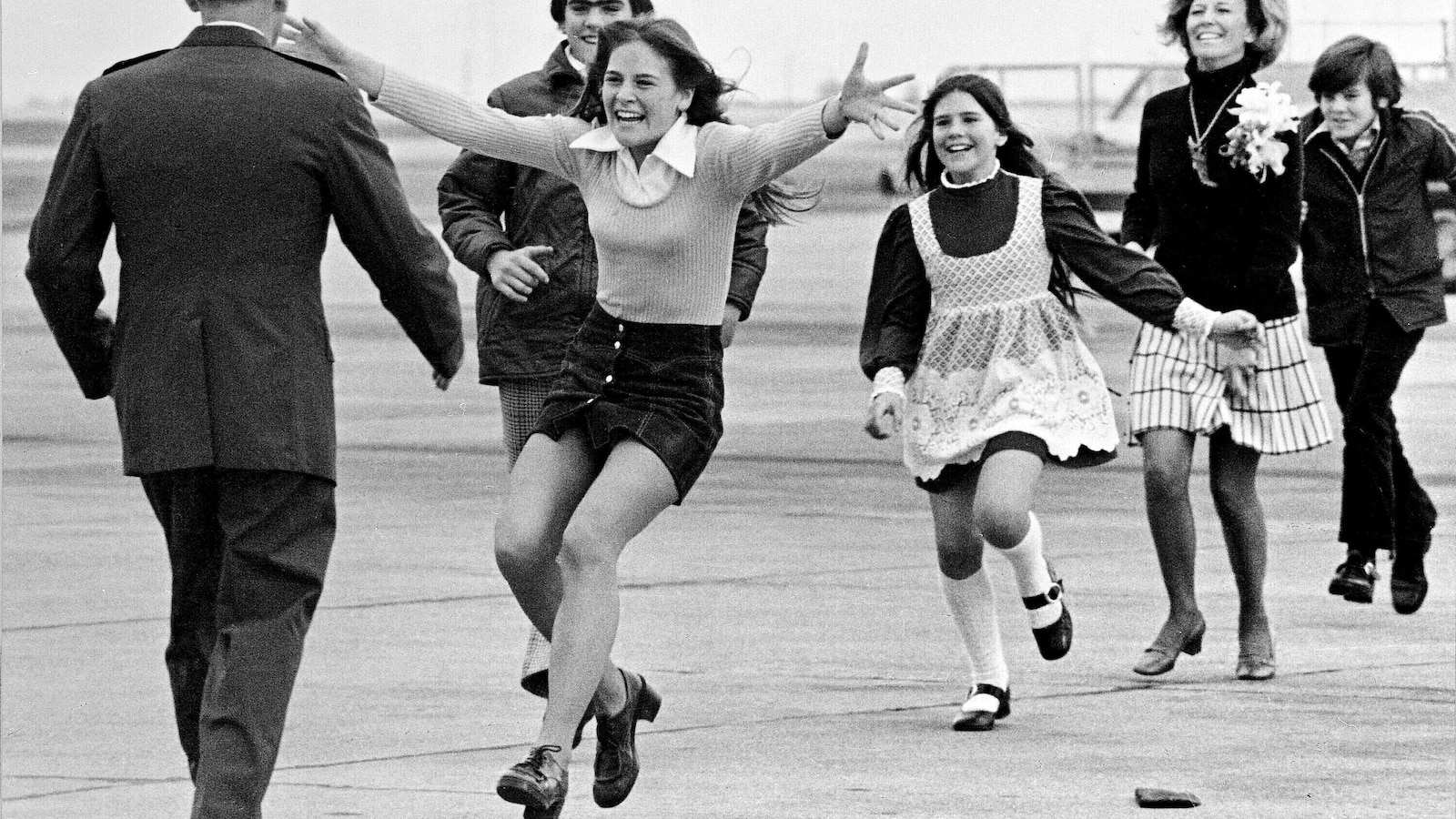Former U.S. Air Force Lieutenant Colonel Robert Stirm, famously immortalized in the Pulitzer Prize-winning photograph known as "Burst of Joy," passed away at the age of 92 in an assisted living facility in Fairfield, California. The poignant image, taken in 1973 by Associated Press photographer Sal Veder, captured a deeply emotional moment at Travis Air Force Base in California when Stirm was reunited with his family after spending nearly five and a half years as a prisoner of war (POW) in North Vietnam during the Vietnam War. The photo, showing his family rushing toward him with his oldest daughter sprinting ahead with arms outstretched, became an enduring symbol of the end of U.S. involvement in Vietnam and the profound relief and joy of homecoming.
Robert Stirm’s daughter, Lorrie Stirm Kitching, who was just 15 years old at the time of the reunion, shared the lasting impact the photo has had on her life. She described it as a powerful and deeply emotional memory that remains vivid to this day. “It is so deep in my heart, and the joy and the relief that we had our dad back again," she said, reflecting on the intensity of that moment. To her, the photograph is more than just an image; it is a daily reminder of gratitude that her father was among the fortunate few who survived captivity and returned home. Kitching keeps a copy of the photo prominently displayed in her home, a testament to the enduring significance of that day in 1973.
Robert Stirm’s military career and wartime experiences were harrowing. In 1967, he was serving with the 333rd Tactical Fighter Squadron at Takhli Royal Thai Air Force Base in Thailand. During a bombing mission over North Vietnam on October 27, his F-105 Thunderchief was shot down. Stirm was wounded, having been shot three times while parachuting to the ground, and was captured immediately upon landing. What followed was nearly 1,966 days—more than five years—of captivity in five different prisoner of war camps, including the notorious “Hanoi Hilton.” This prison was infamous for its brutal treatment of American POWs, involving torture and starvation, especially targeting downed pilots like Stirm.
Among the prisoners held in the Hanoi Hilton was the late U.S. Senator John McCain, who had also been shot down in 1967. Stirm and McCain knew each other well; they were held in adjacent solitary confinement cells and maintained contact through a tapping code. Stirm’s daughter recalled a rare moment when her father laughed in captivity, thanks to a joke McCain tapped out to him, though she lamented never knowing what the joke was. Their shared experience and resilience symbolize the struggles faced by many American POWs during the war.
Despite the triumphant homecoming captured in the photograph, Stirm’s return to civilian life was complicated. He was 39 years old when the iconic photo was taken, but the image belied the personal challenges he faced. Shortly after his release, he was handed a “Dear John” letter from his wife, Loretta, delivered by a chaplain. The letter expressed her decision that their marriage could not continue, reflecting the emotional and psychological toll his captivity had taken on their relationship. The letter’s poignant words conveyed the painful reality that their lives had irrevocably changed, and despite her desire to make the marriage work, she felt they could no longer be together.
Stirm later reflected that the widespread attention the photo brought was a double-edged sword. While the image brought him fame and recognition, it also coincided with the difficult personal and legal issues he had to face upon his return. He and Loretta divorced a year after his release, and both remarried within six months. Nevertheless, they maintained contact, coming together for family events and weddings over the years until Loretta’s death from cancer in 2010 at the age of 74. Their daughter acknowledged the complexity of their story, understanding that relationships affected by such extraordinary circumstances often have many facets.
After retiring from the Air Force in 1977, following 25 years of service, Robert Stirm transitioned to civilian life. He joined Ferry Steel Products, a company founded by his grandfather in San Francisco, and also worked as a corporate pilot. Despite the challenges and changes in his personal life, Stirm’s legacy as a decorated pilot and Vietnam War hero remained intact.
Robert

